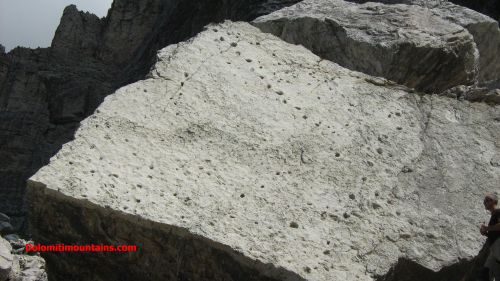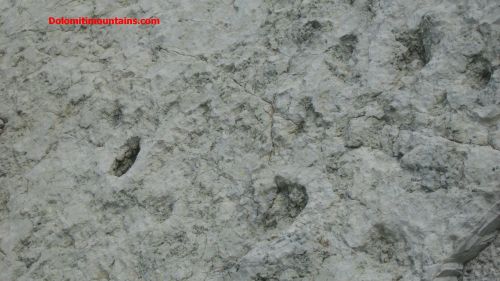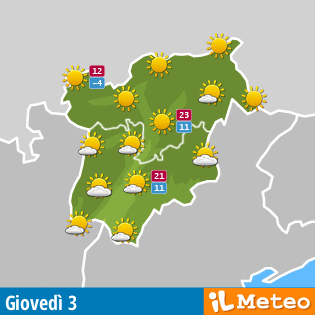Geology of Dolomites
The Geological History and Evolution
 |
| Italian |

Geology of Dolomites are something extremely linked. Lot’s of people think of it as an Earth paradise, a singular, great natural phenomenon. The Dolomites are more than a geological reality of the Oriental Alps, more than just a simple rock. From the beaches and the sees, which during about 270 million years where transformed in Dolomia and then - after formed today’s mountains, and then the changes made by man, that beyond eight thousand years walk on the dolomite valleys.
Even other areas of the earth can be classified as Dolomite, but only in these alpine areas the geology of Dolomites has bin so big that makes it so unique. From what once was a warm and tropical see – with a position more South of what it is today – full of life and furrowed from warm sea flows, the mountains that we know today where formed. Small organisms, the corals, could live and multiply in the course of time in what was a gulf called Tetide. And so, as happens even today in the barrier reef of the South sees, these organisms built a huge amount of colonies. With the help of the rocks and with the happenings of volcanic eruptions and various catastrophes that rotated during the course of time, these organisms built up for a thickness of more than two thousand metres on top of a platform of rock.
During many millions of years this layer of rock was reshaped under the thrust of geological phenomenons, emerging and sinking back into the sea. Every single time these phenomenons occurred, happened that nature preserved the traces under a fossil shape.
Around the year 230 million an event still not totally comprehensible made though that many of the calcareous rocks of the alps enriched of magnesium. This event made the chemical compound known today as Dolomia, the origin of the geology of Dolomites. The making of today’s Alps, as for the Dolomites, is though more recent.
About 100 million years ago the African platform started moving North approaching to the European one. Between these two enormous platforms there where smaller ones like the Adriatic platform. There was an irregular moving of the two larger ones and so the Adriatic platform, between forty and fifty millions of years ago, under an enormous pressure, raised up until the making of today’s alpine chain and the Dolomites. During other millions of years many more natural factors helped and carving the Dolomites, wind and rain, and also the ice age have made the mountains as we see them today and we can appreciate by Dolomites Climbing.
Australia is a land of contrast, a tourist’s dream. There is so much to explore… mountains, gorges, rivers, waterfalls, canyons, valleys, rainforests, beaches and the outback… it’s all down under. Discover over 230 travel destinations and plan your Australian holiday adventure.
From Geology of Dolomites to its real name
Not a long time ago these mountains where called as we know them today: Dolomite. In 1788 the French mineralogist Déodat Tancréde de Dolomieu gave his name to these Mountains. He identified the chemical compound of the alpine rocks, discovering that the mineral of which they are made of is the calcium magnesium carbonate.
So Dolomieu
distinguished the Dolomite from the more common limestone and he had the
scientific proof when he sent twelve mineral samples to Nicolas De Saussure. So the mineralogist definitely gave the finding of this new rock to Dolomieu. The year before the Verona Giovanni Arduino had identified a different kind of carbonate than the limestone, but certainly the results of his research and accurate descriptions of the mineral did prevail the name of the French geologist.


